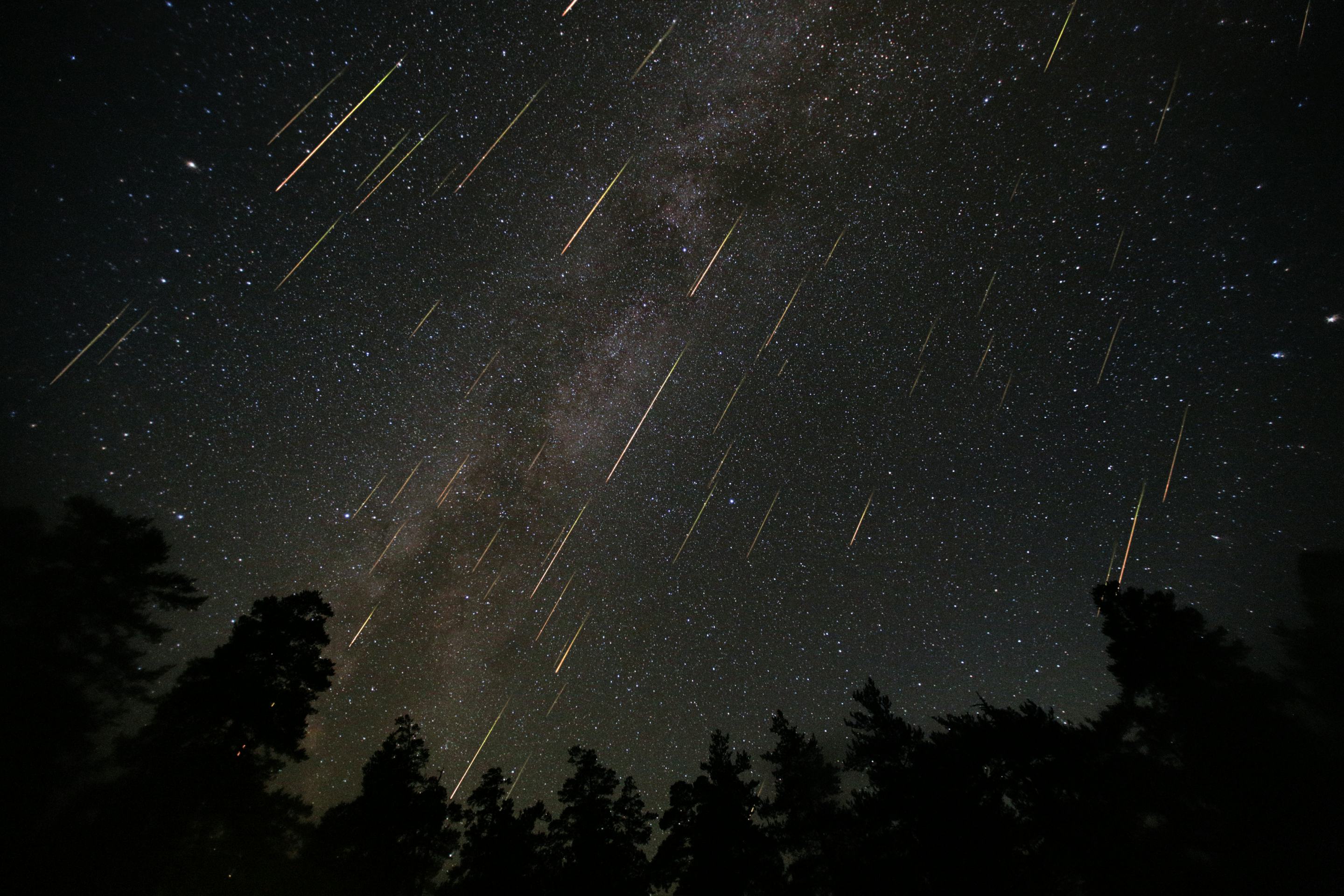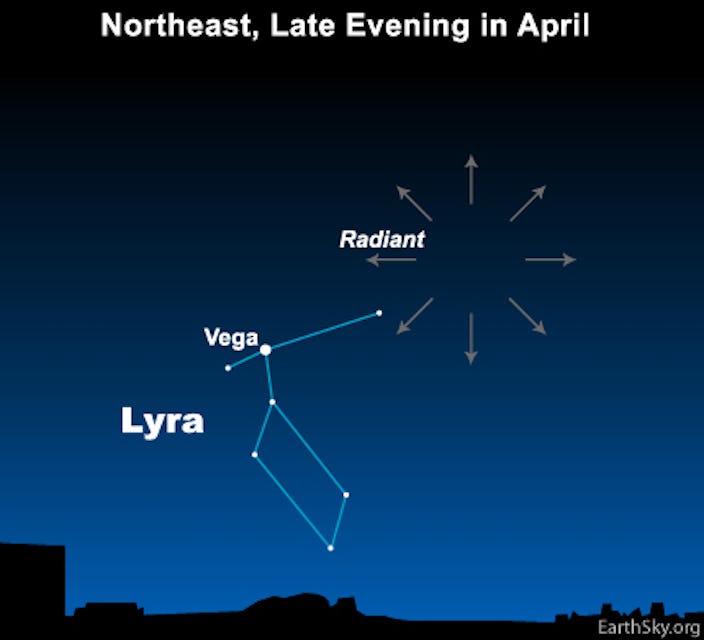
Mid-April is the real opening of meteor season, thanks to improving weather and a long spell of quieter skies in the months before. The peak of this year’s Lyrid meteor shower will open on Thursday, April 21.
Head out before dawn on April 21 and April 22 to catch the rest of the peak. If you’re clouded out or otherwise busy, however, know that you might get lucky and catch a few stray Lyrids before or after these times.
What causes meteor showers?
Meteor showers occur when the planet Earth, moving along in its orbit around the Sun, plows into a stream of dust left behind by an asteroid (a space rock) or a comet (an icy snowball).
You can think of comets and asteroids as the prehistoric remnants of our Solar System. These are small bodies that formed billions of years ago, before the planets and moons coalesced. Asteroids and comets come into the inner Solar System due to the gravitational attraction of our Sun, which dominates the neighborhood.
Meteor showers are completely harmless to us, as they are essentially dust trails in space. These fragments, which can be quite tiny, disintegrate far up in the atmosphere. As the fragments slam into our atmosphere, they can leave impressive fiery trails behind. We call these atmospheric trails “shooting stars” or more properly, “meteor showers.”
How old is the Lyrid meteor shower?
NASA says the Lyrids have been recorded for at least 2,700 years. The first known sighting took place in 687 BCE, during the Zhou dynasty in China — the longest-enduring dynasty in that country.
As for what generates the dust trail, that comes from Comet C/1861 G1 Thatcher, which was discovered on April 5, 1861 by A. E. Thatcher. The comet has a 415-year long orbital period and will make its next close pass to us in 2276.

How to see the Lyrid meteor shower
To find the Lyrids, look for the bright star Vega in the constellation Lyra (the harp.) Depending on your culture, however, you may have a different name for Vega than the standard International Astronomical Union designation.
Vega is the “radiant” of the shower, meaning that the meteors appear to emanate from that region. For best results, however, we suggest you look slightly away from Vega. That will allow you to see meteors with longer streaks.
Most meteor showers are best visible at 2 a.m. local time. While the meteor shower can be seen in both hemispheres, Vega is far higher in the sky in the northern hemisphere and you will see more meteors there. There is no need to use binoculars or telescopes to see the shower, but a chair and perhaps a coat might be useful to stay comfortable.
When you go out, give your eyes at least 20 minutes to get adjusted to the darkness. Try as best as you can to avoid light pollution. If you want to use a flashlight or your phone, cover the device with red paper or plastic to protect your night vision.
Lyrid meteor shower 2022 prediction
Luckily for skywatchers, the Moon will be in a waning crescent phase in the sky and won’t considerably interfere with observations. NASA predicts that in 2022, the peak meteor rate for the Lyrids will be 10 to 20 meteors an hour.
Historically, a few years surprised skywatchers with bursts of meteors. Sightings of up to 100 meteors an hour were recorded in places such as 1803 (Virginia), 1922 (Greece), 1945 (Japan), and 1982 (U.S.), NASA says. But these bursts can’t easily be predicted.
When is the next meteor shower in 2022?
The next meteor shower will be the Eta Aquarids, which are expected to peak between May 4 and May 5. But if you’re looking for a larger show, watch for the Perseids in August. The peak night for the Perseids is expected to be August 11-12.







